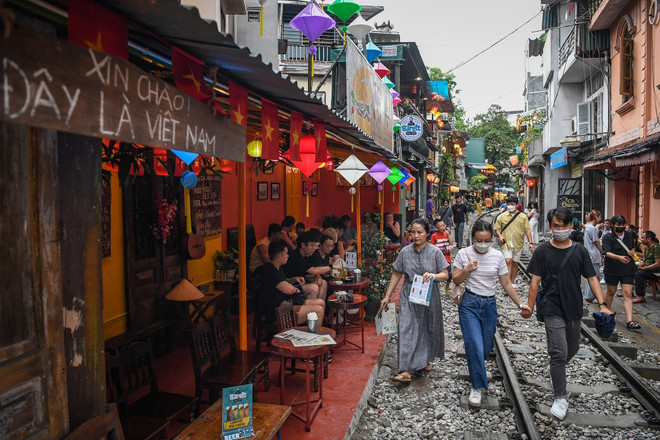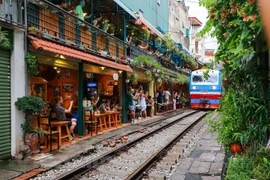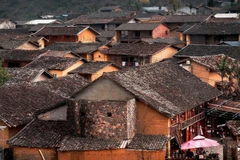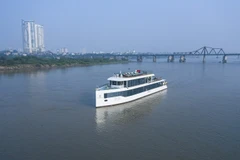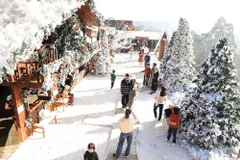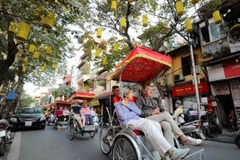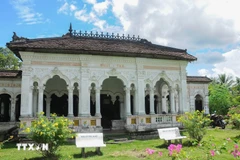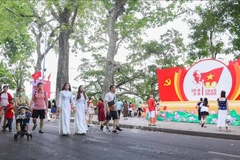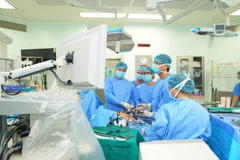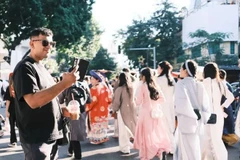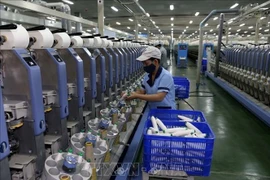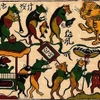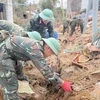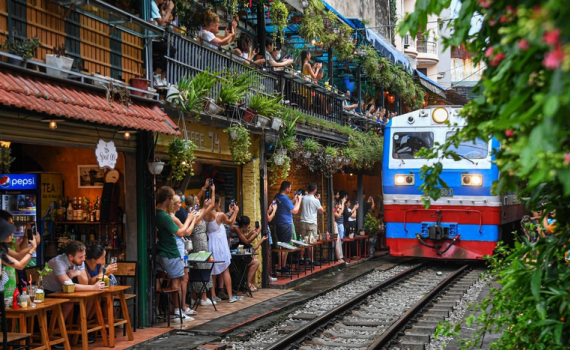 The Hanoi Department of Tourism said on April 4 that it has asked businesses offering tourism and transport services in the city not to launch tours of the train street. (Photo: VNA)
The Hanoi Department of Tourism said on April 4 that it has asked businesses offering tourism and transport services in the city not to launch tours of the train street. (Photo: VNA)
Hanoi (VNA) – In lieu of the dangerous train traffic at the site, the Hanoi Department ofTourism said on April 4 that it has asked businesses offeringtourism and transport services in the city not to launch tours of the trainstreet, a popular destination for many foreign visitors.
The entry ban to the train street, famous for itsmakeshift coffee shops along the train track running from Le Duan street to PhungHung street, aims to ensure security and safety for visitors, the department said,urging travel firms to encourage holidaymakers, especially foreigners, not tovisit and take photos at the coffee shops.
The department also asked relevant agencies to seriouslyobserve regulations on rail traffic safety and urban order, and assigned itsinvestigation force to step up inspections and handling of wrongdoings.
It was reported that many tourists have visited the railsection in Hang Bong ward, with some groups transported to thebarrier on Tran Phu street, causing traffic congestions there, according to deputydirector of the department Nguyen Hong Minh.
Hoan Kiem district has repeatedly ordered theclosure of coffee shops along the train track and asked local households not torun these businesses at the dangerous site, yet the situation has seen no improvements.
The capital city welcomed some some 978,700foreigners in the first three months of this year, 5.9 times higher than thesame period last year, said the municipal Department of Tourism.
The number was part of the 5.9 million visitorscoming to the capital city between January and March, a two-fold increaseyear-on-year.
Hanoi now houses 3,756 lodging facilities totaling70,218 rooms. The average occupancy rate of the local 1-5 star hotels wasestimated at 56.5% in the three months, up 37.2% year-on-year.
The city has 29 food and beverage, 35 shopping, sixentertainment, and one healthcare businesses meeting the standards to servetourists. Its tourism sector is making efforts to develop travelling routes,including those connecting the downtown area with the Bat Trang pottery craftvillage and the Huong pagoda in My Duc district with the Tam Chuc – Trang Antourism complex in Ha Nam and Ninh Binh provinces. Night tours have beenconducted, and activities on pedestrian streets refreshed.
Hanoi aims to welcome 22 million tourists this year,earning 77 trillion VND (3.27 billion USD), increasing by 17.6% and 28.2%against 2022, respectively.
This year, it focuses on developing package productsto stimulate tourism demand through the air transport connection. It has signedtourism development cooperation programmes with localities in the southwesternregion, the Red River Delta, and the northwestern region.
According to the department, in 2023, the city willconcentrate on developing regional linkage products, MICE (meeting, incentive,convention, exhibition) tourism, weekend tourism, urban tourism, sea and islandtourism, health care tourism and educational tourism. The agency will promotethe connection among travel businesses, state management units and touristdestinations to introduce tourism locally.
This year, Vietnam is set to welcome 110 millionvisitors, including 8 million foreign arrivals. This is a big challenge butalso an opportunity for Hanoi tourism to achieve its goals./.
